Many RVers dream of traveling to Alaska, considering it the ultimate destination on their bucket lists. So we’ve created a series of articles to help you navigate the Last Frontier in a motorhome or travel trailer, in hopes that you can enjoy exploring the 49th state, as well!

Today let’s visit Sitka:
Sitka
Located on the western side of Baranof Island, this town is a secluded gem that should be added to every Alaskan visitor’s itinerary. The first thing you will notice about Sitka, Alaska, is that you can’t drive your RV to this destination. You can, however, transport your motorhome via the Alaska Maritime Highway System (otherwise known as a ferry boat). Because the town of 8,800 can only be accessed by sea or air, Sitka’s charms are a secret to many. Let’s hope you’ll be one of the few that experience her magnetic appeal.

History
This port town was originally settled by Tlingit natives over 10,000 years ago. In more recent history, the community was part of Russia until the Alaska Purchase by the United States in 1867. In fact, from 1808 until the transfer, Sitka was the capital of Russian America, and today many Russian influences can still be seen in the area.
Russia had sent Alexander Baranof to Sitka in 1799, calling the small town Fort Saint Michael. Indigenous Tlingits inhabited a fort overlooking the region, and they eventually destroyed the settlement. Not one to give up, Baranof paid ransom for the few Russians that survived the massacre, then returned to the area with larger forces to defeat the Tlingit and reestablish the community. He built a castle on the fort site in 1837, but tragically it burned in 1898. Today Baranof Castle Hill can be visited, with a few armaments left, but no castle.
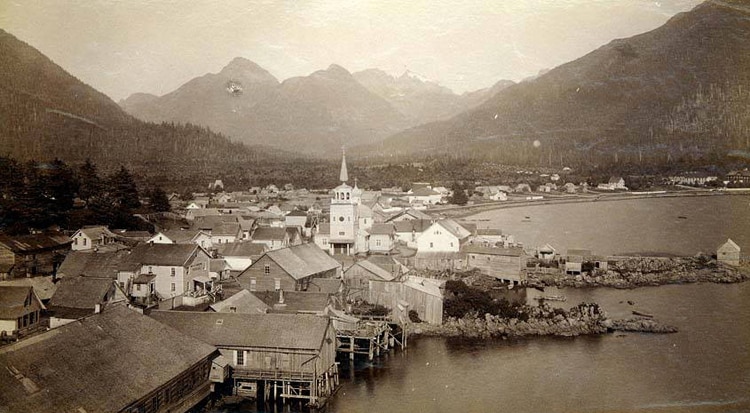
Bishop Innocent, a Russian Orthodox missionary, arrived in 1840. He was appointed as the first Bishop of Alaska and hired Finnish laborers to build a house that was eventually used as a residence for education and as an orphanage. The Bishop’s House was constructed in 1841-1843 and stands today as one of the oldest buildings in Russian America. It is part of the Sitka National Historical Park and has been restored to its original appearance.
The Bishop also is responsible for designing the most notable building in Sitka – St. Michael’s Cathedral. Built in the Russian ecclesiastical architectural style in 1848, the original structure burned in 1966. The church you see today was rebuilt as an exact replica using drawings from the first church but improving upon it with fire resistant elements. The dome, steeples, and onion dome are covered in copper, and the two Russian Orthodox crosses all act as immediate identifiers of the Sitka skyline. The new building is filled with Russian art, icons, and church treasures.

What To See
Today’s Sitka has neatly incorporated its diverse background into a city with a vibrant history, people, and activities. Downtown at Totem Square are trinkets of the town’s influences: a Russian cannon, three anchors from British and American boats, and a totem pole whose creation was requested by the Tlingit people.
The Sitka National Historical Park is filled with Tlingit totem poles, Russian artifacts, and an art studio where visitors can watch native Tlingit artists create authentic totems. The park also presents a free self-guided walking tour through the historic Tlingit fort, as well as ranger-led tours.

Located right off Sawmill Creek Road, the Alaska Raptor Center is a great place for an afternoon outing. The organization was created to rehabilitate birds of prey, and although many are released back into the wild, a few are not able to survive on their own. These birds become “Raptors In Residence” at the center, where visitors can learn more about owls, eagles, hawks, and falcons. At the Flight Training Center, visitors can watch raptors engaged in their rehabilitation and see them re-learn how to fly.

The Sitka Sound Science Center presents an overview of the marine animals that call the waters around Sitka home. An 800 gallon “Wall of Water” exhibit will give you an up-close, personal view. Many interactive displays provide an opportunity to handle starfish, anemones, and other ocean creatures. A hatchery on site lets you watch the feeding of four different salmon species (sorry, no fishing allowed).
If you haven’t gotten to see any brown bears on your Alaska journey thus far, be sure to stop in at Fortress of the Bear. Orphaned bear cubs are taken in here, rehabilitated, and nurtured. You will absolutely love these big brown (and black) bears in their natural environment, and the stories behind their abandonment will definitely tug your heartstrings.
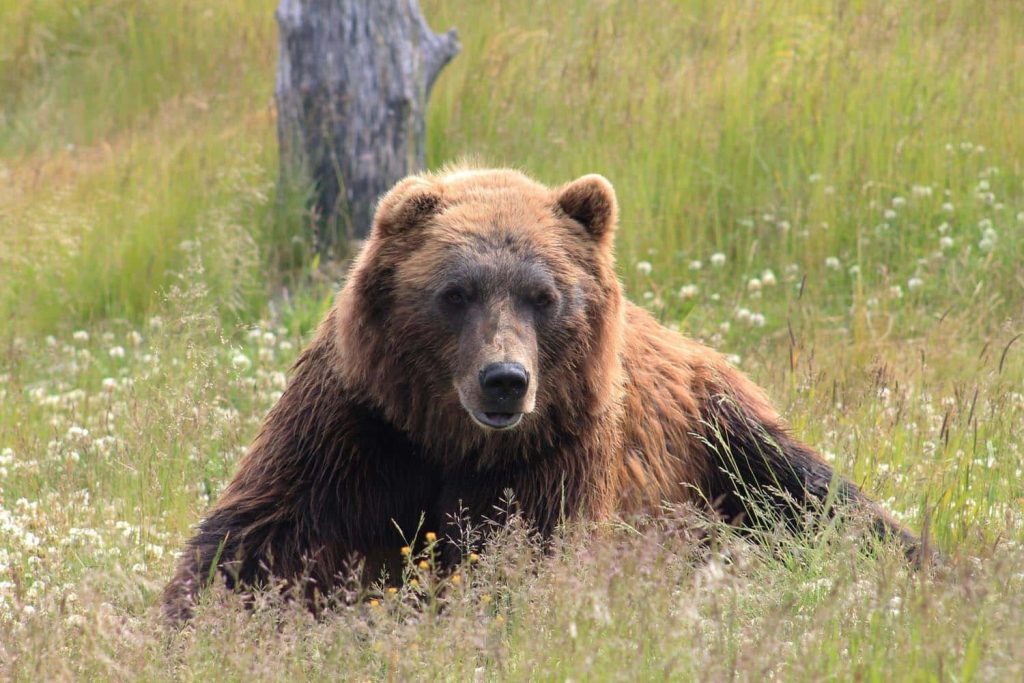
Activities
Located on an island surrounded by lush forests, lots of water and abundant wildlife, Sitka is an obvious destination for outdoor activities, and it certainly doesn’t disappoint.
Sea kayaking is a favorite among locals and visitors alike in what is known as “the coast less paddled.” Many companies offer guided tours, but if you are looking for some peace and quiet, Sitka Sound is pretty easy to navigate on your own. You’ll have afront-roww seat to miles and miles of spectacular wilderness.

There are only 14 miles of roads in Sitka, so bicycling is a great way to explore the region. If you want to get off the road, rent an ATV and check out the Tongass National Forest. It’s the largest national forest in the United States.
Fishing is the number one activity in this region. Deep sea saltwater fishing abounds, but many guide services will also take you into the Tongass National Forest to freshwater rivers for salmon, trout, and steelhead. If you really want a treat, reserve a room at Dove Island Lodge and experience luxurious lodging, as well as legendary fishing on a private island.
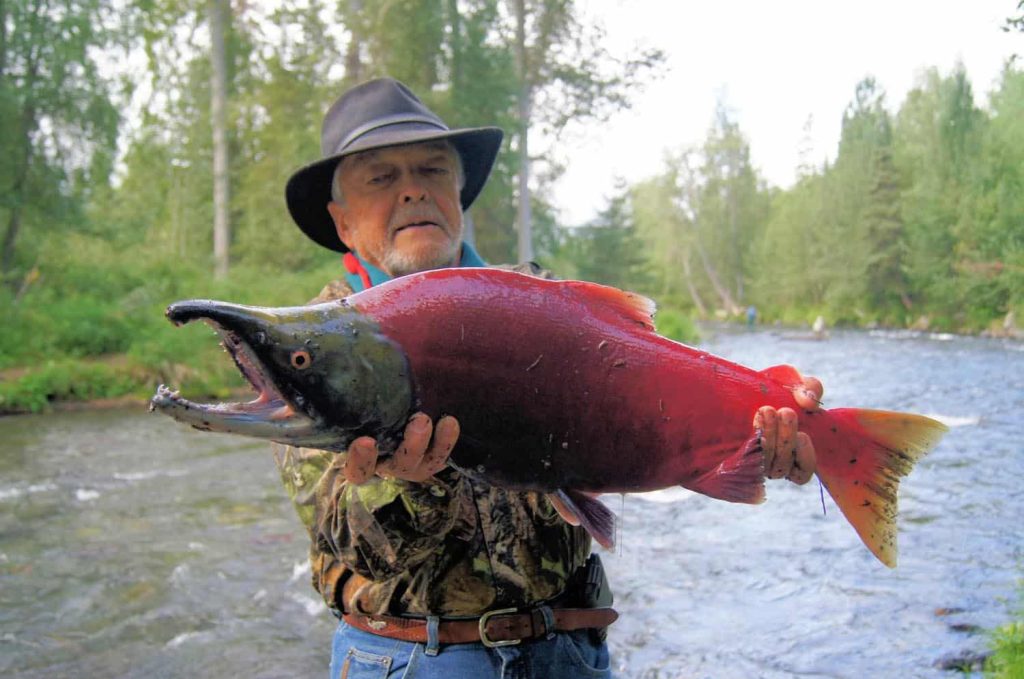
Rent a boat and explore Sitka Sound unsupervised, if you like. Fish or sightsee at your own speed, and investigate the small inlets and coves of Baranof Island. You can also ride around St. Lazaria Island and enjoy the numerous birds that inhabit the protected wilderness. Only scientists are allowed to disembark on the island, as every foot of soil contains underground burrows for nesting birds that could be easily destroyed. However, circling the island will give you a wonderful taste of the wild scenery, with jagged cliffs, sea caves, and volcanic rock formations.
If a guided tour is more your style, take a wildlife boat trip. A Whale’s Song Expedition will take you to see the largest mammals on earth, and they provide a naturalist on board to explain the animals’ behavior and environment. The company even offers multi-day photography trips.
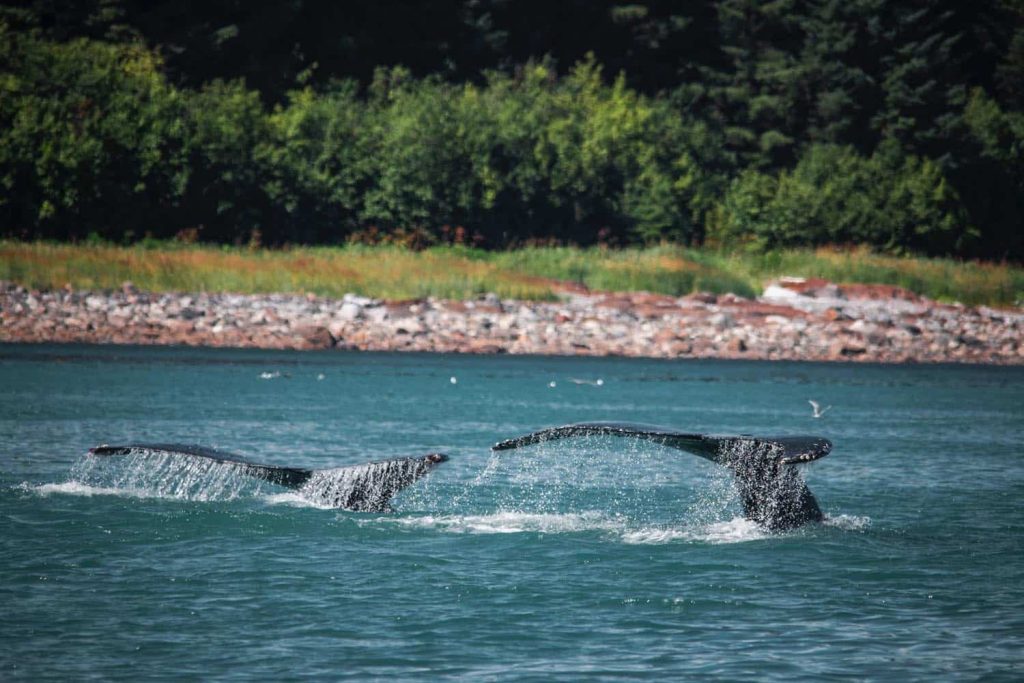
There are a variety of places to hike around Sitka, including a dormant volcano. Mount Edgecumbe can be seen across the Sitka harbor on Kruzov Island and is a moderate hike of almost seven miles, the last 1,000 feet in elevation being a little steep and above timberline. Forty years ago on Mount Edgecumbe a local prankster, Porky Bickar, pulled off one of the best April Fool’s jokes to date. He dropped a bunch of tires in the volcano’s crater, setting them on fire to smoke and smolder. From across the bay, Sitka residents were convinced that the volcano was preparing to erupt, until Bickar admitted that it was just a prank, one that he had been planning for more than four years.

We can’t talk about hiking without mentioning a more “citified” version of the activity. Taste of Sitka offers a “Sea Walk Tour” that will take you through many historical highlights of the town, as well as introducing you to several merchants in the area. Many of the businesses are run by local working artisans who encourage visitors to watch as they create products.
Ocean Climate
It is obvious that Sitka has a distinctly different flavor than many of the other places we’ve visited in Alaska. Because its location is more remote, the experience seems a little more precious to those who have made the trek. The town is a resilient community that treasures its abundance of natural and scenic resources, and with an oceanic climate, Sitka doesn’t resemble the towns in the interior of the state.
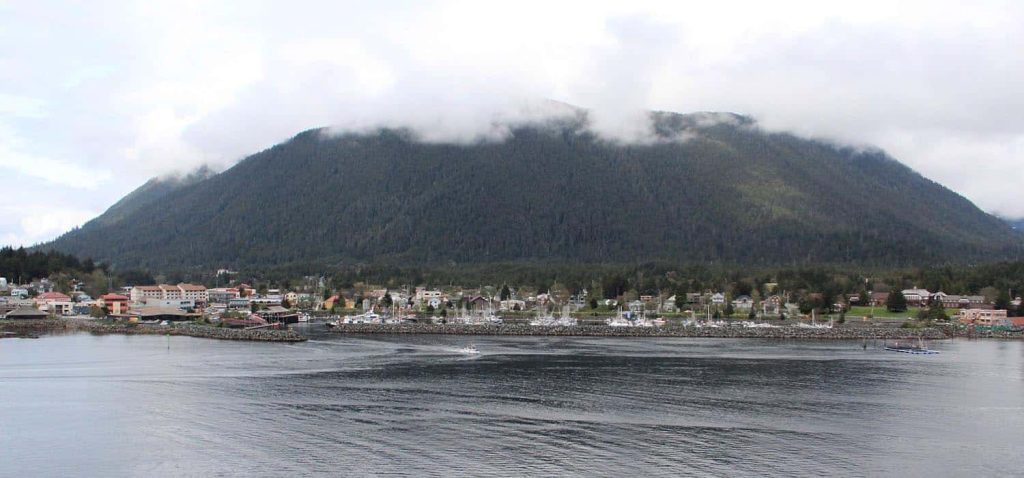
Temperatures are more moderate throughout the year, but moisture is commonplace, with about 86 inches of rain a year and about 33 inches of snow. So come prepared for summer temps in the 50’s and bring your umbrella!
In more recent years, many travelers have been introduced to Sitka by their cruise lines, traveling from Bellingham, Washington up through the Inside Passage and on to such places like Ketchikan and Juneau, then docking at Sitka. So if you choose to leave the RV on the mainland, you can still experience this extraordinary town and arrive by boat. Its streets are easy to navigate on foot, as Sitka has been designated a “Walk Friendly Community.”
However you explore this gem in the Alaskan Panhandle, I am sure you’ll find the former capital of Russian America very intriguing.
Explore More of Alaska
Start planning your trip to The Last Frontier now, and be sure to check out other Alaskan destinations here in the Camping World blog.
Author’s Note: If you will be driving through Alaska and/or Canada please consider purchasing a current copy of “The Milepost.” It is a travel guide that will list necessities (like gas stations) and amenities (like lodging) throughout Alaska and the western Canadian provinces by milepost marker. This is a prerequisite for traveling in the area, as distances between service stations and grocery stores can be hundreds of miles in many cases. Another piece of knowledge gleaned from “The Milepost” are the hours (and seasons) of operation of businesses along the route, as many close down during fall and winter.
What did you think of Sitka, Alaska? Is it on your list of must-visit places? Leave a comment below.








